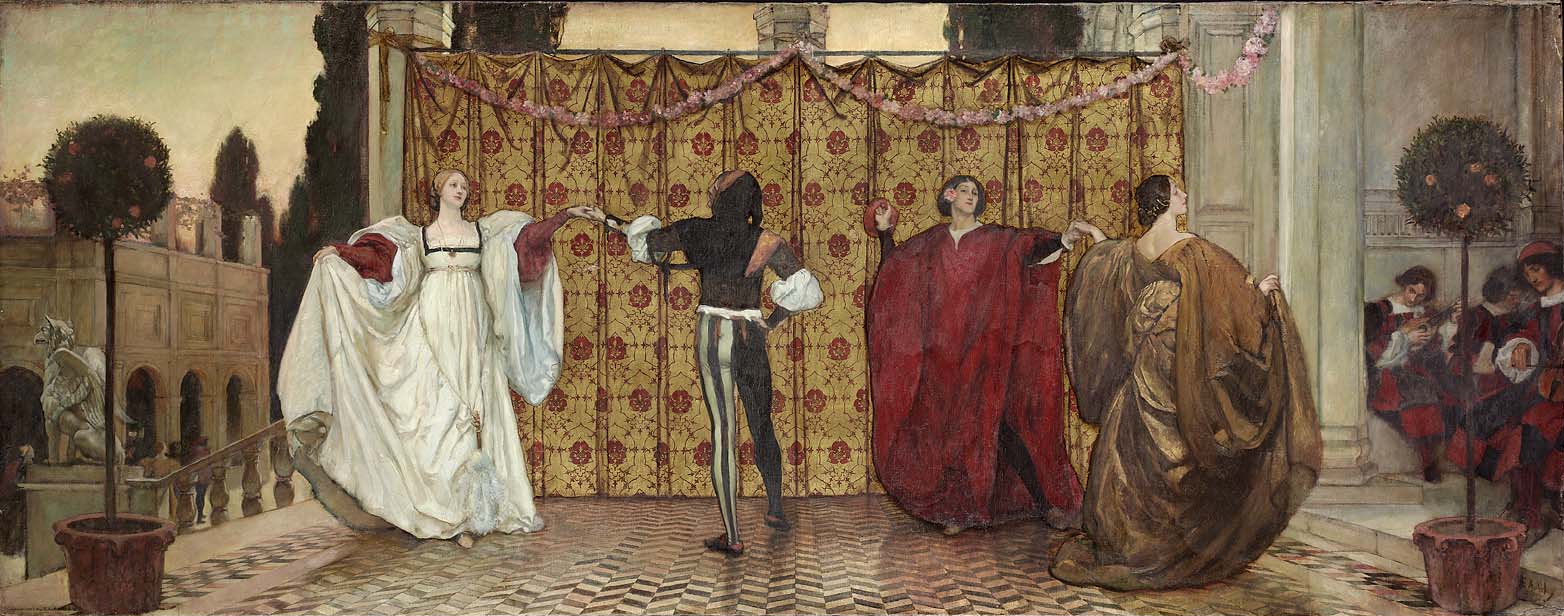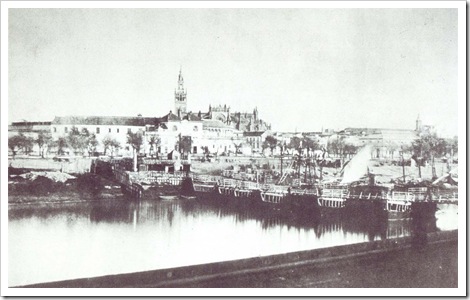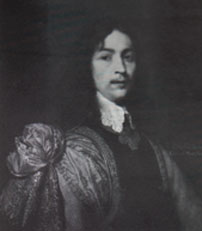|
Relief Of Newark
The Relief of Newark (21 March 1644) was a Royalist victory during the First English Civil War. It was a personal victory for Prince Rupert and it resulted in the Royalists holding Newark-on-Trent until very near the end of the war. Background At the start of 1644, King Charles hoped to form an army in the northwest of England, built around regiments which he had been able to bring back from Ireland as a result of the signing of a treaty, or "cessation", with the Catholic Confederates. Lord Byron commanded this army, but at the Battle of Nantwich on 26 January, Byron was defeated, with heavy casualties to the first regiments of foot landed from Ireland. In the aftermath of this setback, Charles ordered his nephew, Prince Rupert, to take command and restore Royalist fortunes in the northwest. Rupert set up his headquarters in Shrewsbury on 21 February. Meanwhile, the Parliamentarian forces in the Midland counties advanced to besiege the Royalist stronghold of Newark-on ... [...More Info...] [...Related Items...] OR: [Wikipedia] [Google] [Baidu] |
First English Civil War
The First English Civil War took place in England and Wales from 1642 to 1646, and forms part of the 1639 to 1653 Wars of the Three Kingdoms. An estimated 15% to 20% of adult males in England and Wales served in the military at some point between 1639 and 1653, while around 4% of the total population died from war-related causes. These figures illustrate the widespread impact of the conflict on society, and the bitterness it engendered as a result. Conflict over the role of Parliament and religious practice dated from the accession of James VI and I in 1603. These tensions culminated in the imposition of Personal Rule in 1629 by his son, Charles I, who recalled Parliament in April and November 1640. He hoped by doing so to obtain funding that would enable him to reverse his defeat by Scots Covenanters in the Bishops' Wars, but in return Parliament demanded a greater share in government than he was willing to concede. In its early stages, the vast majority on both sides s ... [...More Info...] [...Related Items...] OR: [Wikipedia] [Google] [Baidu] |
Wolverhampton
Wolverhampton ( ) is a city and metropolitan borough in the West Midlands (county), West Midlands of England. Located around 12 miles (20 km) north of Birmingham, it forms the northwestern part of the West Midlands conurbation, with the towns of Walsall to the east and Dudley to the south. The population in 2021 was 263,700, making it the third largest city in the West Midlands after Birmingham and Coventry. Historic counties of England, Historically in Staffordshire, Wolverhampton grew as a market town specialising in the wool trade. During the Industrial Revolution, it became a major centre for coal mining, steel production, lock making, and automotive manufacturing; the economy of the city is still based on engineering, including a large aerospace industry, as well as the Tertiary sector of the economy, service sector. The city is also home to the University of Wolverhampton. A town for most of its history, it gained city status in the United Kingdom, city status in 2000. The ... [...More Info...] [...Related Items...] OR: [Wikipedia] [Google] [Baidu] |
Conflicts In 1644
Conflict may refer to: Social sciences * Conflict (process), the general pattern of groups dealing with disparate ideas * Conflict continuum from cooperation (low intensity), to contest, to higher intensity (violence and war) * Conflict of interest, involvement in multiple interests which could possibly corrupt the motivation or decision-making * Cultural conflict, a type of conflict that occurs when different cultural values and beliefs clash * Ethnic conflict, a conflict between two or more contending ethnic groups * Group conflict, conflict between groups * Intragroup conflict, conflict within groups * Organizational conflict, discord caused by opposition of needs, values, and interests between people working together * Role conflict, incompatible demands placed upon a person such that compliance with both would be difficult * Social conflict, the struggle for agency or power in something * Work–family conflict, incompatible demands between the work and family roles of ... [...More Info...] [...Related Items...] OR: [Wikipedia] [Google] [Baidu] |
1644 In England
Events from the year 1644 in England. This is the third year of the First English Civil War, fought between Roundheads ( Parliamentarians) and Cavaliers (Royalist supporters of King Charles I). Incumbents * Monarch – Charles I Events * January – Oliver Cromwell and his soldiers impose a Puritanical regime of worship at Ely Cathedral. * 22 January – King Charles I opens the Royalist 'Oxford Parliament (1644), Oxford Parliament'. * 26 January – First English Civil War The First English Civil War took place in England and Wales from 1642 to 1646, and forms part of the 1639 to 1653 Wars of the Three Kingdoms. An estimated 15% to 20% of adult males in England and Wales served in the military at some point b ...: at the Battle of Nantwich the Roundhead, Parliamentarians defeat the Cavalier, Royalists, ending a week's siege of the Cheshire town. * March – Matthew Hopkins begins his career as a witch-hunter in the eastern counties. * 21 March – First English Civil ... [...More Info...] [...Related Items...] OR: [Wikipedia] [Google] [Baidu] |
Battles Of The English Civil Wars
A battle is an occurrence of combat in warfare between opposing military units of any number or size. A war usually consists of multiple battles. In general, a battle is a military engagement that is well defined in duration, area, and force commitment. An engagement with only limited commitment between the forces and without decisive results is sometimes called a skirmish. The word "battle" can also be used infrequently to refer to an entire operational campaign, although this usage greatly diverges from its conventional or customary meaning. Generally, the word "battle" is used for such campaigns if referring to a protracted combat encounter in which either one or both of the combatants had the same methods, resources, and strategic objectives throughout the encounter. Some prominent examples of this would be the Battle of the Atlantic, Battle of Britain, and the Battle of France, all in World War II. Wars and military campaigns are guided by military strategy, whereas batt ... [...More Info...] [...Related Items...] OR: [Wikipedia] [Google] [Baidu] |
Galliard
The ''galliard'' (; ; ) was a form of Renaissance dance and Renaissance music, music popular all over Europe in the 16th century. It is mentioned in dance manuals from England, Portugal, France, Spain, Germany, and Italy. Dance form The ''galliard'' is not an improvised dance, but rather, it consists of choreographed patterns of steps, which occupy one or more measures of music. In one measure, a galliard typically has five steps; in French such a basic step is called a ''cinq pas'' and in Italy, ''cinque passi''. This is sometimes written in English sources as ''sinkapace''. These steps are: right, left, right, left, cadence. The galliard is an athletic dance, characterised by leaps, jumps, hops and other similar figures. The main feature that defines a galliard step is a large jump, after which the dancer lands with one leg ahead of the other. This jump is called a ''cadence,'' and the final landing is called the ''posture.'' The cadence is typically preceded by three quick ... [...More Info...] [...Related Items...] OR: [Wikipedia] [Google] [Baidu] |
Pavane
The ''pavane'' ( ; , ''padovana''; ) is a slow processional dance common in Europe during the 16th century (Renaissance). The pavane, the earliest-known music for which was published in Venice by Ottaviano Petrucci, in Joan Ambrosio Dalza's ''Intabolatura de lauto libro quarto'' in 1508, is a sedate and dignified Partner dance, couple dance, similar to the 15th-century basse danse. The music which accompanied it appears originally to have been fast or moderately fast but, like many other dances, became slower over time. Origin of term The word ''pavane'' is most probably derived from Italian [''danza''] ''padovana'', meaning "[dance] typical of Padua" (similar to Bergamask, "dance from Bergamo"); ''pavan'' is an old Northern Italian form for the modern Italian adjective ''padovano'' (= from Padua). This origin is consistent with the equivalent form, ''Paduana''. An alternative explanation is that it derives from the Spanish ''pavón'' meaning ''peacock''. Although the dan ... [...More Info...] [...Related Items...] OR: [Wikipedia] [Google] [Baidu] |
Program Music
Program music or programmatic music is a type of instrumental art music that attempts to musically render an extramusical narrative. The narrative itself might be offered to the audience through the piece's title, or in the form of program notes, inviting imaginative correlations with the music. A well-known example is Sergei Prokofiev's ''Peter and the Wolf''. The genre culminates in the symphonic works of Richard Strauss that include narrations of the adventures of Don Quixote, ''Till Eulenspiegel'', the composer's domestic life, and an interpretation of Friedrich Nietzsche's philosophy of the Übermensch, ''Also Sprach Zarathustra''. Following Strauss, the genre declined and new works with explicitly narrative content are rare. Nevertheless the genre continues to exert an influence on film music, especially where this draws upon the techniques of 19th-century late romantic music. Similar compositional forms also exist within popular music, including the concept album and ... [...More Info...] [...Related Items...] OR: [Wikipedia] [Google] [Baidu] |
Charles II Of England
Charles II (29 May 1630 – 6 February 1685) was King of Scotland from 1649 until 1651 and King of England, Scotland, and King of Ireland, Ireland from the 1660 Restoration of the monarchy until his death in 1685. Charles II was the eldest surviving child of Charles I of England, Scotland and Ireland and Henrietta Maria of France. After Charles I's execution at Palace of Whitehall, Whitehall on 30 January 1649, at the climax of the English Civil War, the Parliament of Scotland proclaimed Charles II king on 5 February 1649. However, England entered the period known as the English Interregnum or the English Commonwealth with a republican government eventually led by Oliver Cromwell. Cromwell defeated Charles II at the Battle of Worcester on 3 September 1651, and Charles Escape of Charles II, fled to mainland Europe. Cromwell became Lord Protector of England, Scotland and Ireland. Charles spent the next nine years in exile in France, the Dutch Republic and the Spanish Netherlands. ... [...More Info...] [...Related Items...] OR: [Wikipedia] [Google] [Baidu] |
John Jenkins (composer)
John Jenkins (1592–1678), was an English composer who was born in Maidstone, Kent and who died at Kimberley, Norfolk. Biography Little is known of his early life. The son of Henry Jenkins, a carpenter who occasionally made musical instruments, he may have been the "Jack Jenkins" employed in the household of Anne Russell, Countess of Warwick in 1603. The first positive historical record of Jenkins is amongst the musicians who performed the masque ''The Triumph of Peace'' in 1634 at the court of King Charles I. Jenkins was considered a virtuoso on the lyra viol. Charles commented that Jenkins did "wonders on an inconsiderable instrument." When the English Civil War broke out in 1642 it forced Jenkins, like many others, to migrate to the rural countryside. During the 1640s he was employed as music-master to two Royalist families, the Derham family at West Dereham and Hamon le Strange of Hunstanton. He was also a friend of the composer William Lawes (1602–1645), who was ... [...More Info...] [...Related Items...] OR: [Wikipedia] [Google] [Baidu] |
Pontoon Bridge
A pontoon bridge (or ponton bridge), also known as a floating bridge, is a bridge that uses float (nautical), floats or shallow-draft (hull), draft boats to support a continuous deck for pedestrian and vehicle travel. The buoyancy of the supports limits the maximum load that they can carry. Most pontoon bridges are temporary and used in wartime and civil emergencies. There are permanent pontoon bridges in civilian use that can carry highway traffic; generally, the relatively high potential for collapse and sinking (e.g. due to waves and collisions) and high continuous maintenance costs makes pontoons unattractive for most civilian construction. Permanent floating bridges are useful for sheltered water crossings if it is not considered economically feasible to suspend a bridge from anchored Pier (architecture), piers (such as in deep water). Such bridges can require a section that is elevated or can be raised or removed to allow waterborne traffic to pass. Notable permanent pontoo ... [...More Info...] [...Related Items...] OR: [Wikipedia] [Google] [Baidu] |
Charles Gerard, 1st Earl Of Macclesfield
Charles Gerard, 1st Earl of Macclesfield, PC (c. 16187 January 1694) was an English aristocrat, soldier and courtier. He fought as a Royalist during the English Civil War, before spending a period in exile under the Commonwealth. After returning to England upon the Stuart Restoration in 1660, he was made Earl of Macclesfield by Charles II in 1679. He later fell out of royal favour and was declared an outlaw, but after a second period on the continent, he returned to England in 1688 in the retinue of William of Orange. He received several offices under the crown, including serving as the last Lord President of Wales in 1689. Early life The eldest son of Sir Charles Gerard, he was a member of an old Lancashire family, his great-grandfather having been Sir Gilbert Gerard (died 1593) of Ince, in that county, one of the most distinguished judges in the reign of Elizabeth I. His mother was Penelope Fitton, sister and co-heiress of Sir Edward Fitton, of Gawsworth, Cheshire. Nothi ... [...More Info...] [...Related Items...] OR: [Wikipedia] [Google] [Baidu] |







